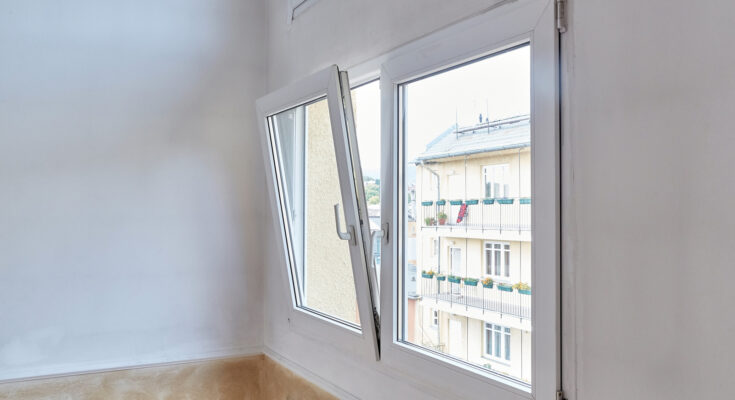The Pros And Cons Of European Windows (And If They’re A Good Idea)
If you’re enchanted by videos of European windows — those that move inward at the top instead of swinging all the way through — you might want to install them at home. But is it a good idea to ditch the classic American designs while renovating your windows? To make the right decision, you must understand these tilt-and-turn models better. Opening up about the style in an exclusive interview with House Digest, Ernesto Cappello, the CEO of Window Fix, Inc., said, “European-style tilt and turn windows are engineered with a dual-function design: they tilt inward at the top for secure ventilation or swing open like a door for full access.” This is possible due to their unique hinge mechanism.
Shedding light on how they differ from the styles more common in the U.S., he said that “… American double-hung windows typically move vertically — either the top or bottom sash slides up and down within the frame.” This basic difference sets the two styles apart. Continuing, Cappello added, “This fundamental difference in operation reflects broader design philosophies: European windows emphasize airtightness, security, and thermal performance, while American windows prioritize simplicity of use and compatibility with traditional interior treatments.” So, it might make sense to opt for the European style if you want to limit energy transfer and make your home more secure. That said, Cappello cautioned that “… [European windows] must be thoughtfully integrated into the American home environment.” Otherwise, they might look weird and disrupt your interior design scheme.
Fundamental differences between European and American-style windows
Besides their operating style, European and American windows differ from each other in a few other ways, including their materials, price, and installation methods. In his exclusive interview with House Digest, Cappello explained the differences in materiality. “European windows often use thicker, highly insulated frames made of uPVC, wood, aluminum, or hybrids, designed to house triple glazing with depths of 2 [inches] or more,” he said. This makes them durable. Plus, they’ll help bring down your energy consumption and prevent the cool air from your AC or your heater’s heat from escaping outdoors. On the other hand, Capello said that “American windows tend to use thinner vinyl, fiberglass, or wood frames suited for standard 1 [-inch] insulated glazing.”
Coming to the cost differences, the European turn and tilt models tend to be costlier than their American counterparts. “European windows are typically more expensive due to their advanced engineering, higher material costs, and longer supply chains,” Cappello elaborated. The good news is you can recuperate the invested capital within a few years in the form of low electricity bills. Another major difference is the ease of installation. European windows aren’t as easy to install as their American peers and require professional help. “Installation of European windows is more complex, given the heavier frames, larger hardware, and the need for precise fitting. Installers also need to account for the inward swing, which impacts how the window interfaces with interior finishes.” Since a window’s position and shape can transform a room, you don’t want to take any chances.
Should you install European-style windows in your home?
European-style windows can be worth the investment if they meet your requirements. “If maximum energy efficiency, security, and modern aesthetics are the primary goals, European tilt and turn windows are an excellent option. They are particularly well-suited for high-performance new builds, Passive House designs, and custom luxury homes,” Cappello said in his exclusive interview with House Digest. Simply put, if you want to reduce your energy costs at home, these models are a good choice since they “… can achieve U-values as low as 0.14 [ W/m²K] (roughly R-10), significantly outperforming most American windows in insulation.” Moreover, these windows are outfitted with multiple locking points and reinforced glass, enhancing your home’s security. Plus, the tilt mechanism means you can leave them open at night without worrying about intruders.
“However, homeowners should weigh the challenges: higher cost, more complex installations, potential conflicts with traditional interior treatments, and longer lead times for service or repair,” he cautioned. Besides the initial investment, you’ll also have to bear the higher costs associated with maintenance and replacing faulty parts. “European products often involve multiple vendors — extruders, fabricators, distributors — which can complicate warranty claims and sourcing replacement parts, especially if the product is discontinued or the manufacturer lacks strong U.S. support,” he added. Additionally, if you prefer interior blinds and curtains instead of exterior ones or shutters, the European models might not be suitable. Finally, they might not meet the U.S. compliance standards. “Many European windows are not certified to U.S. standards (such as NFRC or ASTM), and European climate assumptions differ from the wide variations seen across North America,” concluded Cappello.



